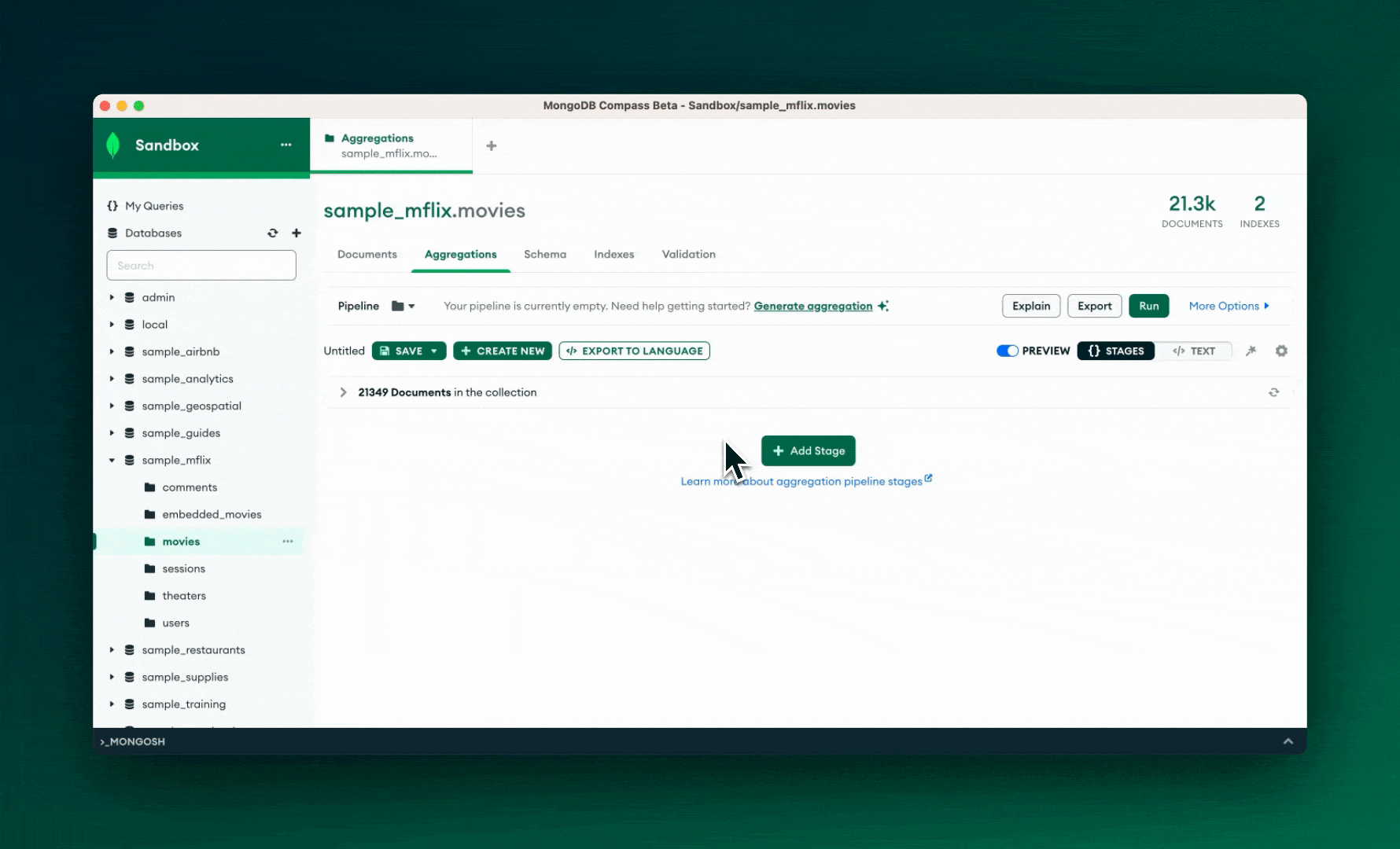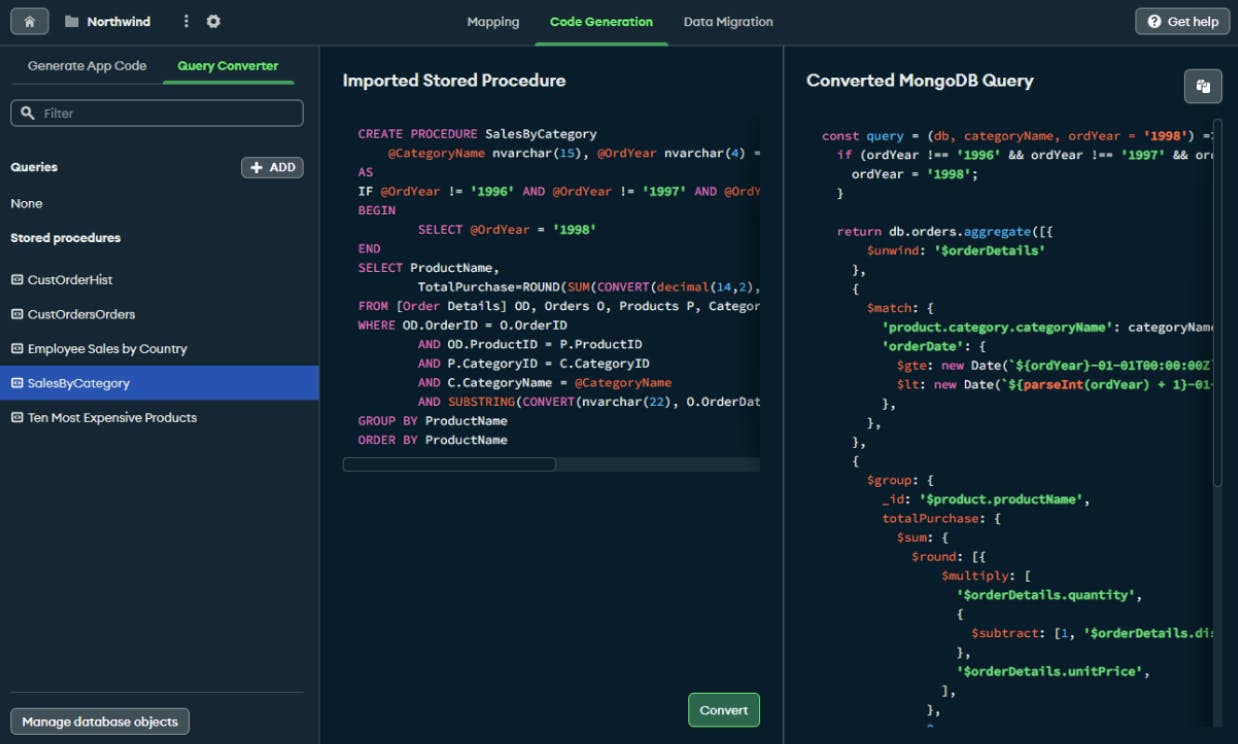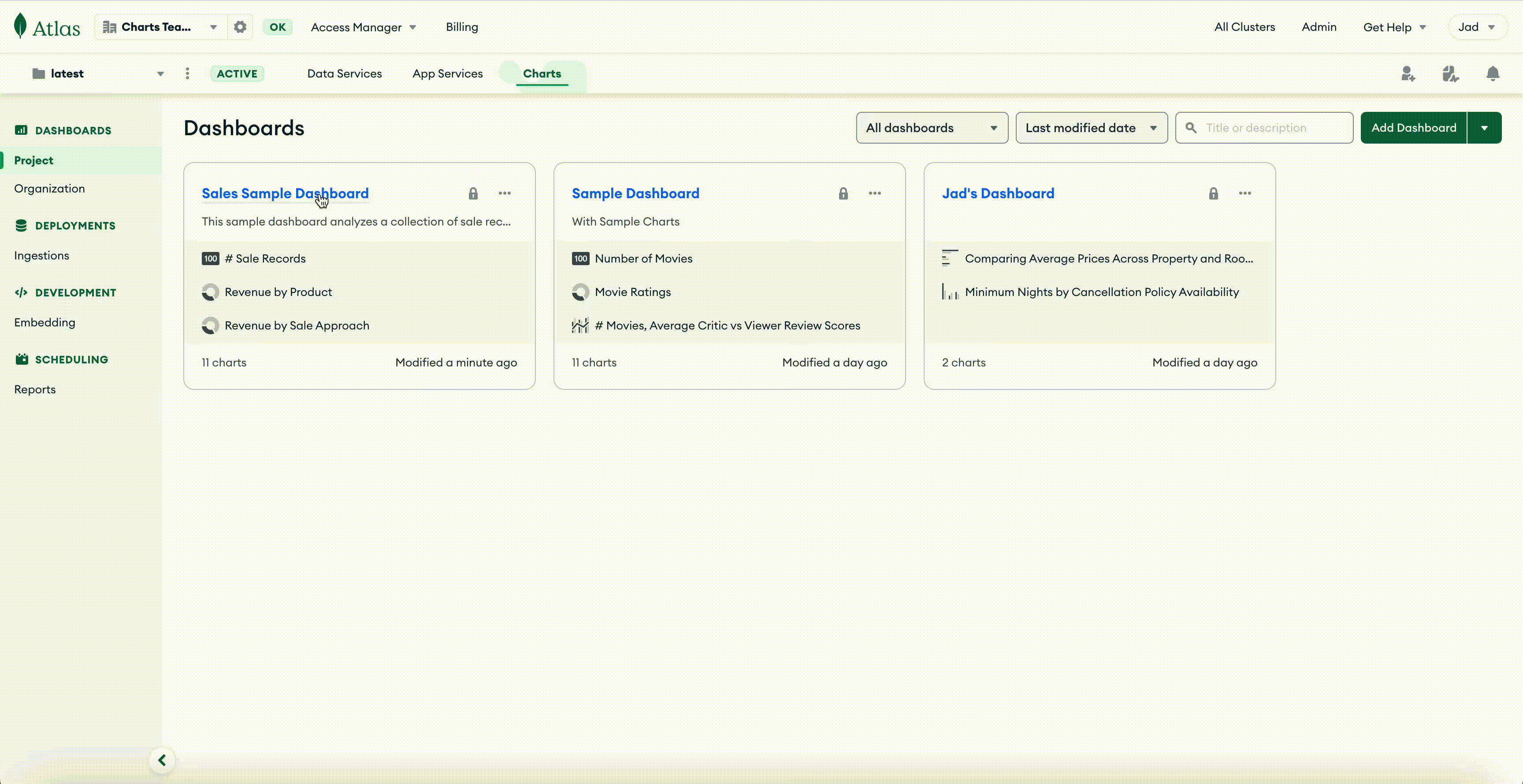新機能:Compass、Atlas Charts、Relational Migrator、Documentation の開発者体験にインテリジェンスをプラス
September 26, 2023 | Updated: October 10, 2025
_Spot_BS_SpringGreen.png?auto=format%252Ccompress)
MongoDB は本日、最新のデータベースのための一連の新機能を発表しました。MongoDB Compass、Atlas Charts、Relational Migrator、MongoDB Documentation などの既存のツールの開発者エクスペリエンスにインテリジェンスを実装。モダンアプリケーションの構築が大幅に簡素化・効率化します。
新機能を備えた各ツールは、開発プロセスにおいて、次のようなガイド付きのインテリジェントなサポートを提供します。
-
MongoDB Compass:自然言語を使用して、シンプルなクエリから高度な多段階集計まで、さまざまなクエリを作成。
-
MongoDB Relational Migrator :SQL クエリを MongoDB クエリ API 構文に変換。
-
MongoDB Atlas Charts :自然言語を使用して、データの基本的な視覚化を生成。
-
MongoDB Documentation:MongoDB Atlas と Atlas Vector Search を基盤に構築されたインテリジェントチャットボットに質問し、ソフトウェア開発中の迅速な情報検索やトラブルシューティングが可能。
開発者の時間はどの組織においても最も貴重なリソースです。ビジネスや顧客のニーズが高まり続けるなか、開発者はアプリケーションの迅速な提供を求められています。MongoDB の最新のデータベース全体にインテリジェンスがプラスされたことにより、多くのユースケースに対応するモダンアプリケーションをこれまで以上に容易に構築できるようになりました。
MongoDB で AI 搭載アプリケーションを構築する方法について詳しくは、AI リソースのページをご覧ください。
MongoDB Compass:自然言語クエリ作成機能
Compass は、MongoDB のダウンロード可能な GUI ツールとして広く利用されており、クエリや集計の作成はその主要な開発者ユースケースの一つです。 Compass に追加された新たなインテリジェンス機能により、、開発者は自然言語を使って高度な集計を作成し、データのクエリ、変換、エンリッチ化が可能になります。その結果、クエリをアプリケーションコードに組み込む際の複雑さや習得の難しさが軽減されます。
新機能は、バージョン 1.40.0 のパブリックプレビューとしてリリースされています。2023 年 10 月まで段階的にユーザー展開する予定です。
使用する際は、まず、お使いのマシンにバージョン 1.40.0 がダウンロード済みであり、この機能にアクセスできることを確認してください。次に、Documents タブを開き、クエリバーの Generate Query ボタンをクリックします。これにより、標準のクエリバーの下にもう 1 つバーが表示されます。ここに自然言語でプロンプトを入力すると、データに対して実行するクエリ API 構文を生成できます。最後に、生成されたクエリの有用性について、「役に立った」または「役に立たなかった」ボタンでフィードバックをお願いします。

MongoDB Relational Migrator:SQL クエリ変換機能
マイグレーションは、MongoDB を利用する際によくあるプロセスです。MongoDB は、2023 年の夏に開催した MongoDB.Local NYC において、マイグレーションに取り組む開発者の支援ツール、Relational Migrator を発表しました。
従来型システムからの移行プロセスでは、多くの場合に、数百・数千規模の SQL クエリのモダナイズが必要となります。多大な時間を要する面倒な作業です。 現在、プライベートプレビュー版として提供されている Relational Migrator を利用することで、既存の SQL クエリやストアドプロシージャを、MongoDB Query API の構文に変換し、開発に適した形式にできます。

開発者は Relational Migrator を活用して SQL クエリを変換できるため、膨大な量の MongoDB クエリを手作業で作成する必要がなくなり、移行プロジェクトをスピードが大幅に向上します。
SQL クエリの変換機能は、現在プライベートプレビューで利用可能です。Relational Migrator の最新バージョンからアクセスを直接リクエストできます。
MongoDB Atlas Charts:自然言語サポート機能
Atlas Charts は、Atlas データを視覚化するのに最適なツールです。Atlas Charts は、データに基づいたインサイトを得るための、シンプルで強力なソリューションであり、開発者や、開発者が支援するビジネスの成長をサポートします。
Atlas Charts の使いやすさに、インテリジェンス機能が追加されました。現在プライベートプレビューで利用可能な新しい自然言語モードでは、例えば、「年間売上高を国別、製品別で比較して」などのシンプルな言語クエリを入力するだけで、データを視覚化できます。 これはまだ第一段階で、今後、さらに高度なクエリやチャートタイプについても、自然言語のサポートを提供する予定です。

こちらからご登録いただくと、チャート作成に役立つ自然言語サポート機能をお試しいただけます。今後もアップデートを予定しています。プライベートプレビュー中の自然言語サポート対象については、ドキュメントをご覧ください。
MongoDB Documentation:インテリジェントチャットボット機能
ドキュメントは、開発者エクスペリエンスにおいて不可欠です。ソフトウェア開発中にドキュメントを使用することで、製品の機能や特徴を容易に見つけることができます。また、よくある問題も効率的に解決できます。MongoDB では、インテリジェントなチャットボットを導入し、最も関連性の高いドキュメントを提示・要約することで、情報検索の体験を向上させています。
MongoDB Atlas と Atlas Vector Search を基盤に構築されたこのチャットボットは、「MongoDB Atlas の使用開始方法は?」、「Atlas プロジェクトの IP アクセスリストに新しい IP アドレスを追加する方法は?」などの自然言語での質問に対し、参考記事やコード例などの関連情報を含む回答を提供します。
.gif)
MongoDB は、インテリジェントチャットボットの構築方法についての教材をオープンソース化して提供する予定です。これにより、コミュニティの他のメンバーも MongoDB Atlas と Atlas Vector Search を活用し、エンドユーザーにインタラクティブな学習体験を容易に提供できるようになります。
データのプライバシーとセキュリティ
MongoDB は、セキュリティを特に重視する世界中の組織から信頼されています。こうした組織は、堅牢なデータセキュリティとプライバシー制御を備えた最新のデータベースを使って、秘密性の高いデータ資産を管理しています。新機能では、アクセスや使用されるデータの透明性を常に確保することで、お客さまが自分のセキュリティ、プライバシー、コンプライアンスの要件に基づいて、適切な意思決定ができるようにサポートします。
今すぐ始めてみませんか?
自然言語を使用してデータとやり取りできる Compass、Relational Migrator、Charts の新たなインテリジェント機能や、MongoDB Documentation のインテリジェントチャットボットを利用することで、MongoDB のドキュメントデータモデルの柔軟性と拡張性を最大限に活用し、あらゆる種類のアプリケーションをこれまで以上に容易に構築できるようになります。
新機能に関するフィードバックをお待ちしております。ユーザーフィードバックポータルでご意見をお寄せください。